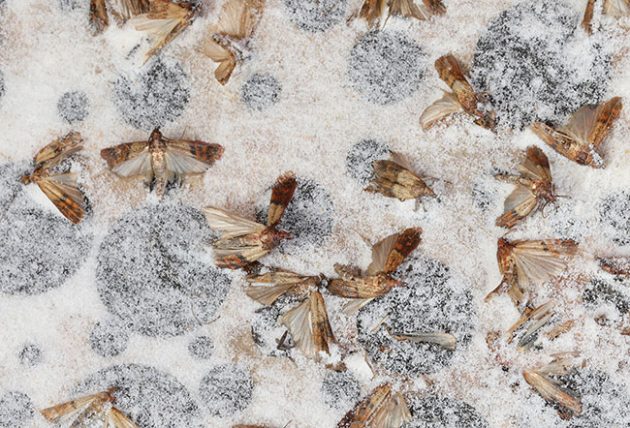
Prevent stored food pests for a smooth post-pandemic rebound
By Alice Sinia, PhD
Features Business and Operations Health & Safety Photo © ChiccoDodiFC / adobe stock
Photo © ChiccoDodiFC / adobe stock As strict pandemic regulations begin to lift, you will likely see an uptick in foot traffic for restaurants across Canada. As you prepare for the post-pandemic rush, proactively now or closer to when that time comes, it is important to remember stored food products may have been sitting on the shelf a little longer than normal.
Stored product pests can wreak havoc on your stores of flour, spices, and other dry ingredients, potentially damaging thousands of dollars in goods and threatening inspection compliance. One thing that makes stored product pests so tricky is they can penetrate through packaging by either chewing or squeezing through weak points and gaps. Besides compromising your brand image, if they contaminate food product at your restaurant, you may be at risk for transmitting diseases like E. coli, Salmonella and Trichinae. Infestations can also quickly spread from one product on a shelf to several different products, and they can be transported from place to place easily.
Fortunately, a proactive program can go a long way in terms of protection. Below are the most common stored product pests and how they can impact your restaurant:
- Indianmeal moths are attracted to dry foods. A female moth can lay between 100 and 400 eggs during her two-week life. After hatching, their off-white with a brown-red head, worm-shaped larvae spend time spinning webs in the infested product and feeding under the webs. Signs of an Indianmeal moth infestation include the silk webbing formed by larvae, moving larvae themselves and droppings or larval cast skins found in the infested product.
- Pantry beetles feed on grains, flour, spices, coffee and more. Some are even attracted to damp and mouldy grains, so their presence could be a sign that your storage area has a moisture problem. A confused flour beetle will cause pungent odour in infested flour, while webbed granular material and chewed holes in grains points to the hairy spider beetle. Trail marks in flour or dust as well as grains that feel warm or heated should alert individuals to the existence of a stored product beetle infestation.
- Granary and rice weevils attack whole grains. Their larvae feed on them from the inside out, leaving them hollow. Hollow grains with round exit holes and small holes in packaging are the primary signs of an infestation. Weevils also cause infested grains to heat, encouraging the growth of fungi and sprouts.
To help stop these pests from damaging your product and your bottom line, monitoring and early detection are key. Follow these steps to fend off stored product pests:
- Inspect all incoming product before putting it in your storage area.
- Grains and other dry food ingredients should be kept in tightly sealed bins, which need to be thoroughly washed between uses.
- Use older products first based on the principles of FIFO, First in First out. Older products are more vulnerable to infestation.
- Eliminate pest entry points. Make sure windows and doors are closed, covered and sealed properly.
- Caulk and seal cracks, crevices and other hiding places inside your storage area.
- Keep floors free of food and other residue and clean up spills immediately.
- Fix leaky pipes to eliminate any excess moisture that may attract other pests.
- Allow proper ventilation and illumination in storage areas. Ventilation helps keep food moisture down, which discourages pests and mold growth.
- Work with your pest management provider to have stored product insect monitors such as pheromone traps and lure traps installed in storage areas for early detection.
- Work with your pest management provider to train staff to identify the signs and help protect against a pest infestation.
Once stored product pests get a foothold in your restaurant, elimination can be difficult. Throwing out contaminated product and sanitizing affected areas may not be enough to control the problem long term. Canadian regulations also enforce strict guidelines for pest removal, which include detailed documentation that untrained employees may be ill-equipped to manage. It is wise to proactively work with a pest management provider to develop a pest control program that not only complies with regulatory requirements but also helps prevent pests in the first place. | CP
Alice Sinia, PhD, is quality assurance manager of regulatory/lab Services for Orkin Canada focusing on government regulations pertaining to the pest control industry. With more than 20 years of experience, she manages the quality assurance laboratory for Orkin Canada and performs analytical entomology as well as provides technical support in pest/insect identification to branch offices and clients. For more information, email Alice Sinia at asinia@orkincanada.com or visit orkincanada.com.
Print this page